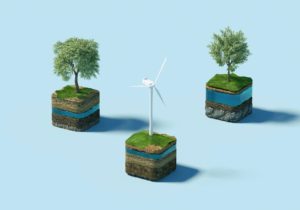If you live far out in the countryside, there is a chance that you won’t have access to proper electric services because of how isolated your place is. It’s still certainly possible to live without electricity, though you might miss out on a lot of modern quality of life things that would make your life a lot easier, which might make getting electricity by other means an attractive prospect.
Or maybe you’re just someone who wants a more cost-effective way of getting electricity into your house. It can rack up quite the bill, especially if you have a lot of appliances and electronics in your house.
Well, with the right resources and a bit of construction and electronics know-how, you can build yourself a wind turbine that can give you free electricity for as long as the blades keep spinning.
Do your research!
First, some ample research about wind turbines is necessary before procuring the materials needed.
You may have already seen a wind turbine, whether it’s in real life or through pictures: They are very, very tall, and usually located in the countryside, where little to no buildings are nearby. This is on purpose; wind turbines, as their name suggests, rely on the power of the wind blowing all around to keep its blades spinning and generate electricity.
A small wind turbine can be very effective in lowering your electricity bill, or just give you electricity in the first place. But there is a catch: You can’t just build a wind turbine anywhere and expect it to work. As mentioned earlier, wind turbines are built in more remote places for a good reason.
To start with, many residential areas have the houses practically right next to each other, if not squeezed together. Depending on how big these houses are, you may or may not have your wind turbine completely blocked from receiving wind from a certain direction because of the buildings in your vicinity. Obviously, a taller wind turbine would limit these issues, but depending on where you live, you may have zoning ordinances that prevent you from building these windmills past a certain heigh, thus reducing its effectiveness. Make sure you double check on the policies and possible limitations of your building and the land before you get started on your windmill. Finally, you will need to take the wind turbine down eventually for maintenance, so make sure that you have at least an acre of land free to give it some space.
Next, the wind. A wind turbine that doesn’t receive any wind is nothing but decoration in your land, so you also need to make sure that your property is receiving wind. Ideally, you are receiving wind speeds of at least 5 meters per second, otherwise it’s not worth it. But not only do you need high enough wind speeds to keep the wind turbine turning, you need said wind to be constant in spinning the wind turbine all year to consider it as a worthwhile investment from its costs upfront. After all, do it right, and you’re looking at saving as much as 50%-90% on your electric bill.
You can look up wind maps online on your country to check the average wind speeds that it receives per month to give you an estimation. Winds aren’t always going to be constant, even more so if you live in a more populated area, so it pays to be prepared.
Installing the wind turbine
There are plenty of construction plans available over the internet that may even include blades and nacelles, and if you’re looking for an easy way to build up a windmill and you have the money, you can buy them.
from someone without having to worry about all of the needed materials. As an added bonus, the manufacturer or dealer you bought the plan for should be able to help you install your wind turbine without much issue.
You can install it yourself, of course, but it will take some construction and electronics knowledge to do so, as you will need to pour cement for the foundation and have a proper elevation platform while erecting the tower.
For the electronics side, you will need to know the difference between direct current and alternating current wiring, which can be very dangerous if done improperly.
If you’re confident in these skills, then go ahead and install it yourself. Otherwise, it would be better to wait for your dealer or a skilled system installer to assist you in setting it up.
Wind turbine maintenance
With proper maintenance and care, your wind turbine can last you at least two decades, so make sure that you aren’t skipping out!
Some examples of maintenance include:
–Checking and tightening of bolts and electrical connections. They may have come loose over time, whether it’s due to weather, strong winds, or simply the grip loosening up from a myriad of random but inconsequential outside factors.
–Checking the leading-edge tape on the turbine blades. These will need to be replaced if they show signs of wearing out.
–Checking for corrosion. This can be devastating, especially due to the wind turbine’s exposure to the outside elements and weather, making it vulnerable. It should therefore be checked periodically to make sure it’s functioning properly.
–Checking the turbine blades. For the first few years, your turbine blades should be fine, but they may eventually need to be replaced as they get worn over the years. 10 years is a pretty good time to change it.
Of course, if you find that this might be too difficult or dangerous a task, you can ask help from your system installer, and they may set you up with a maintenance program.

